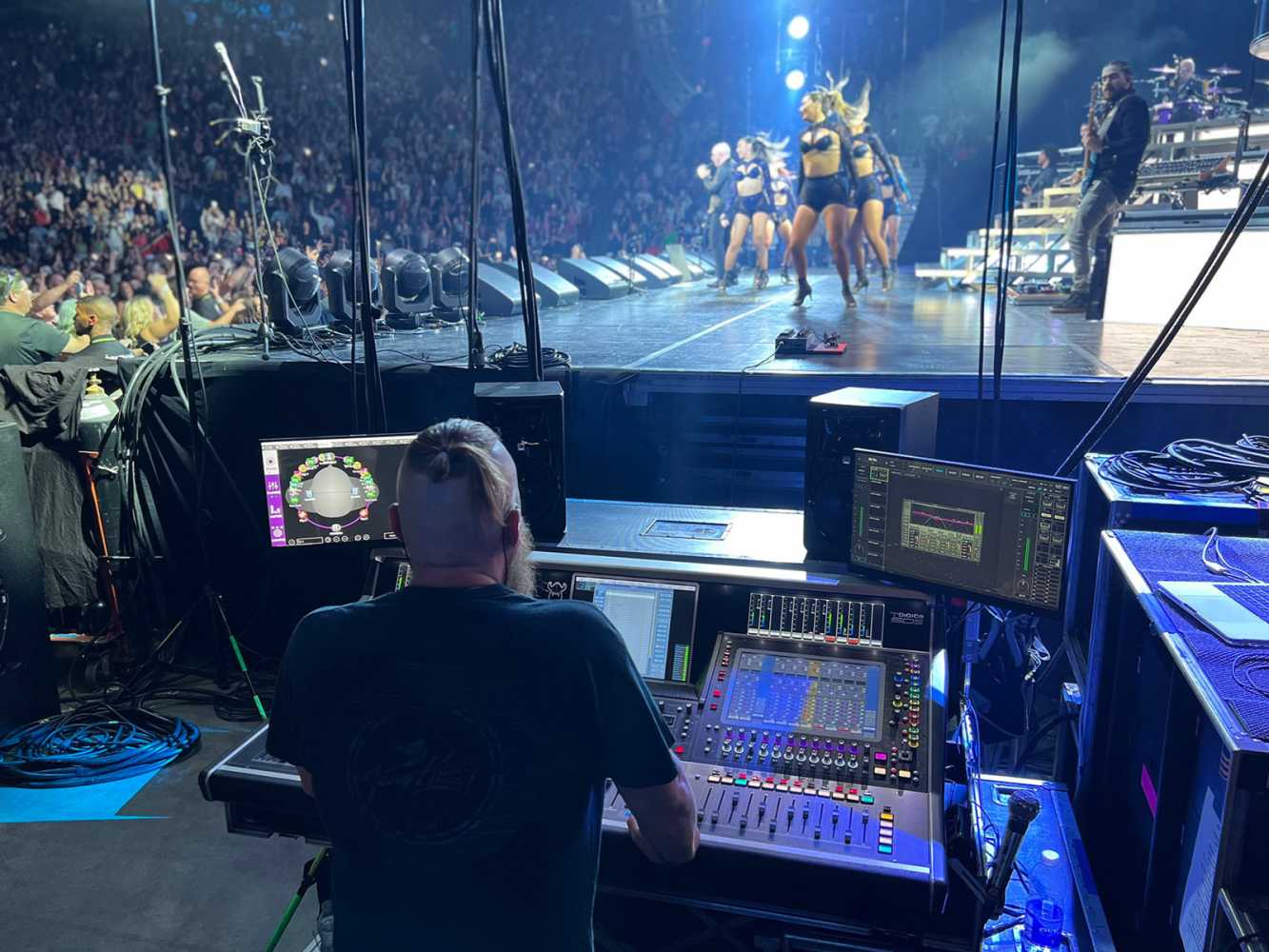Pitbull band Can’t Stop Now with DMI-KLANG
- Details

As a relentless entertainer, that moniker is equally appropriate when it comes to the Miami native’s global touring schedule, which keeps the pop/rap artist’s calendar ultra-packed with performances, such as his latest 52-show Can’t Stop Us Now tour of North America. To ensure that Pitbull’s backing band, The Agents, are hearing themselves and each other in the most natural and beneficial way, monitor engineer Matt Holden recently added a DMI-KLANG card to his staple DiGiCo Quantum5 console.
Based in Louisville, Kentucky, Holden has served as Team Pitbull’s dedicated monitor engineer for the past eight years. However, Can’t Stop Us Now marked his very first opportunity to literally plug KLANG’s immersive platform into the monitoring setup, utilising the DMI-KLANG to supply six immersive band mixes - drums, percussion, bass, guitar, keys, and DJ - two guest mixes, one tech mix, and one playback engineer mix.
“The way I went about introducing KLANG to everyone was pretty simple,” he says. “I spent a lot of time building a great sounding mix on my guest mixes during the first week of tour rehearsals, which was a good way to understand how it all works and play with different positions. From there, I just started tweaking it for the drummer’s mix, and when I felt confident enough, I copied it over to his mix, and it only took about five minutes to get him set. Then I just worked my way through each band member. After spending a week playing around with everything, I put them all on KLANG mixes in a single day.”
Enthusing that The Agents are “a fantastic band to work with”, Holden says: “They’re all very knowledgeable about the studio and able to tell me exactly what they’re looking for. They like to hear pretty much everything, so I immediately knew the space created by KLANG would give them room for it all. With 15 channels of drums and 13 channels of percussion alone, I was able to nicely spread everything around with drums in the front of the mix as you would visually see them.
“Percussion was around the back side of the mix, which I inverted for the percussion player. I tended to place low-end instruments - kick ‘out,’ bass, bass synth, and 808s - fairly low behind me, but the kick ‘in’ would be in front at chest height. It really made a connection with the low end that I wasn’t able to achieve before. After that, it was also very easy to simply spread around the keys and guitar in the ears.”
The engineer also had the show’s tracks running through KLANG, though the consensus was to keep them in the traditional stereo space. “I was definitely able to lower the click track quite dramatically, though,” he adds. “I used our DPA 5100 5.1 mic setup at the FOH position along with two Shure Beta 57 on stage left and right for audience mics, which helped me create a huge sounding crowd and really put the band back in touch with the audience.”
















